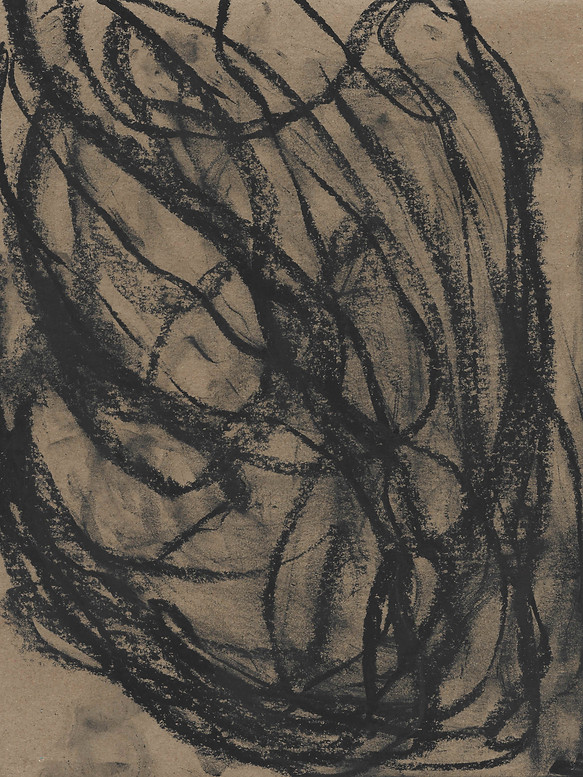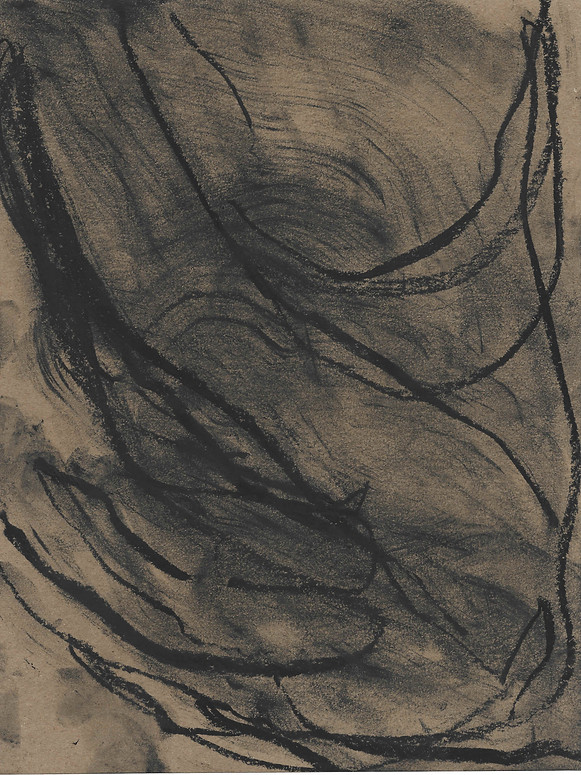LUIS GUERRA
Wandering Echoes
Handbook of Operative Losses
2020 - 2022

Un eco innato en cada uno, en la disposición de piedras sobre la playa, en el trazamiento que se despliega en el instante de un gesto para su connotado desaparecimiento. La in(s)t(it)u-i-ción de un proceso, de un caminamiento, que se diluye, y en tanto que tal esquiva a la institucionalidad de su procedimiento.
Este desaparecimiento innato, intuitivo, que traza, que toca al mundo, en ese relacionamiento con-stitutivo, en el que no hay sujeto que traza ni sujeto que se traza, aquello queda para lo ritual, su necesidad social, sino un trazamiento que diluye la disposición de una intención, incluída la misma, de las piedras o la mano, o la de la arena y el mar detrás.
Como lo que traza Juan Luis Martínez sobre el nombre en la portada de la Nueva Novela, o la llaga en la mejilla de Raúl Zurita, o los ojos vendados de Lumír Hladík, o las mejillas abultadas de Adrien Piper.

"On parle de rituel pour ces gestes-là. Cést un abus de mots, c'est un abus de termes. Il y a tout simplement un quiproquo dans le fait que nous, parlants, nous reprenons des gestes de cet ordre et nous leur donnons une dimension rituelle parce qu'ils ont une signification symbolique. Mais cela ne veut pas dire du tout que, venant d'eux, ces gestes-là soient des rituels. Ça ne prend force de rituel que dans la mesure où il y a rite, et le rite est social ; il est dans l'air du temps. Cesont les rites qui héritent des gestes innés, et ce n'est pas par hasard que l'on retrouve les gestes de Janmari (balancements, danse) dans des rituels formalisés comme la messe. Si ça résonne tellement en nous, si ça persiste même par-delà le rite, c'est que ça a un écho dans l'inné de chacun."
(D, 2007: 707).
In February 2020, I started an artistic research residency in Helsinki, thanks to a grant from the Saastamonien Foundation. This grant consisted of three months of research. However, in March 2020, the Covid pandemic started, and the rapid closure of State borders pushed me to return to Barcelona with my family.
Three months of mandatory confinement left us unable to continue our projects. The cultural sector worldwide was brutally hit.
Then, another Finnish foundation opened an emergency call to support artists. I got the Kone Foundation and was able to continue working. However, circumstances bent theories, and in those first months of the pandemic, no one knew how long it would last and what consequences it would have for society as a whole.
I write this in a "re-normalized" world. There was no effective learning from almost two years of confinement, controlled behaviors, and a generalized dysfunctionality of the political, social, and economic systems. Europe is at war again in its territories, but at the same time, tourist numbers have returned to pre-pandemic levels. And the climate emergency continues.
During these pandemic years, I finished writing the book I had been working on since my postdoctoral studies at CfAR Uniarts Helsinki.
This project has been possible thanks to the support of:


Saastamoinen Foundation, Helsinki, Finland.
The Kone Foundation, Helsinki, Finland.
OSIC, Generalitat de Catalunya, Spain.

PYRES, 2020
charcoal on paper, A4

































CLOUDS, 2020
watercolors on kraft paper, A4